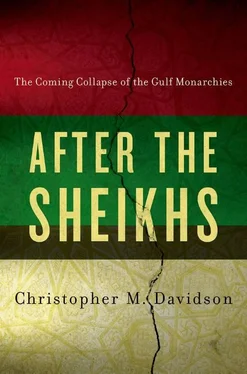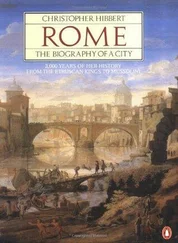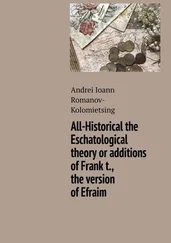In most Gulf monarchies the public portraits are usually triptychs, often with the centre figure’s portrait being raised slightly higher than those on the left and right. In Kuwait, for example, the emir is at the centre, with his crown prince to the left, and the prime minister to the right. The recently deposed Nasser bin Muhammad Al-Sabah’s prime ministerial portrait, for example, usually depicted him as laughing or grinning. Similarly in Bahrain, the triptych usually follows the same pattern, albeit with a king instead of an emir. For many years it has also been common to see solo portraits of Bahrain’s powerful unelected prime minister, Khalifa bin Salman Al-Khalifa, clearly reflecting his centrality to the regime. In Qatar the three portraits are again those of the emir, his crown prince, and the unelected prime minister. Recently, however, the emir has often been depicted on his own, wearing western dress and usually representing some historic achievement or victory for Qatar. In 2011–12, for example, large pictures of him holding aloft the soccer World Cup appeared on billboards in recognition of Qatar’s 2010 announcement that it would stage the 2022 World Cup. Portrait politics are a little more complicated in the UAE, given the federation and the relationships between and within the various ruling families. In Abu Dhabi, the triptych’s centre figure is still usually the once popular and handsome Zayed bin Sultan Al-Nahyan, despite his death over seven years ago. The current ruler — an unassuming-looking character — is displayed on his left, with his image being either heavily enhanced or badly out of date. The powerful crown prince is always on the right. In some cases Zayed is still portrayed on his own, as a younger man on horseback, or sometimes holding a falcon or some other symbol of the country’s heritage. The other emirates usually feature their current ruler in the centre, with their crown prince and either a powerful brother or ‘deputy crown prince’ at their sides. Exceptions include Sharjah, where the ruler is often depicted on his own — likely due to his crown prince not being a son, and a long history of internecine disputes in the emirate. In Dubai there are occasionally solo portraits of Rashid bin Said Al-Maktoum — the father of the current ruler and the man credited with building up Dubai over much of the twentieth century. On major highways and sometimes in federal government buildings it is now common to see dual portraits of the rulers of Abu Dhabi and Dubai, or perhaps a triumvirate of these two along with the crown prince of Abu Dhabi. In Oman and Saudi Arabia triptychs and other public portraits are less common. In the former, as described, the sultan reserved most authority for himself, being reluctant to elevate other ruling family members. As such, where portraits do exist, they are usually of the sultan alone. In Saudi Arabia, despite power being more evenly shared among ruling family members, the king is also usually depicted alone. This is likely due to the large number of similarly aged relatives who rival each other in the succession process, thus allowing the king to be visually depicted as the ‘linchpin of the political system’, [272] 51. See Lucas (2004). Lucas describes this situation as ‘…monarchs can stand above tribal, religious, ethnic, and regional divisions by acting as the linchpin of the political system. These potentially conflicting identities can then be subsumed under the monarch’s benevolent patronage. The monarchy becomes the unifying symbol of the (newly created) nation’.
symbolising unity, and taking on the role of supreme mediator.
Titles as well as portraits also matter in terms of personal image-building in the region. Over the years the various ruling families and their principal members have taken on increasingly grandiose titles — usually ones that have no connection to the region’s history and which, in some cases, are sacrilegious. Given Saudi Arabia’s more autonomous state formation process, the Al-Saud family quickly took on the guise of royalty, adopting a system of titles in the 1940s not dissimilar from Britain’s. Notwithstanding a clear emphasis on egalitarianism in Islam, the male descendants of the king became ‘His Royal Highness’ or ‘HRH’, while other, lesser, ruling family males became ‘His Highness’ or ‘HH’. Similarly in Oman, it appears that the sultan has taken on the full-blown ‘HRH’—a title which no previous sultans have used. The other Gulf monarchies — ruled simply by ‘sheikhs’ until Britain’s departure — also quickly upgraded their titles upon independence. Though most were careful not to antagonise Saudi Arabia or embarrass Britain, with their various rulers settling on the title of emir rather than king, they nonetheless took on the title of ‘HH’ while lesser members of their families adopted ‘His Excellency’ or ‘HE’, despite the title usually being reserved for government ministers or ambassadors. More recently, there have been efforts by these smaller monarchies to further glorify their leaders. Most notably, the aforementioned 2002 Bahraini constitution upgraded the emir to a king, despite the tiny size of the kingdom. While more subtly in the UAE the state-backed media has started to refer to the rulers of Abu Dhabi and Dubai (but not the other emirates) as being HRH, with their families being ‘royal’ as opposed to merely ‘ruling’.
Another interesting phenomenon has been the celebrity status desired and cultivated at great expense by some ruling family members, especially in those states where political mobilisation is most limited — such as Qatar and the UAE. [273] 52. See Lucas (2004). Lucas argues that ‘if a sultanistic regime attempts to mobilise society, it is only for the glorification of the ruler’s ego or his personality cult’.
For many years young sheikhs, often those associated with horse-riding, falconry, or other manifestations of sporting prowess or activity linked to tribal heritage have been celebrated and venerated by younger sections of the indigenous populations. With the advent of new internet technologies and communications, this celebrity culture has been taken to an even higher level. No longer are images just built up by the state-backed media or by appearances at large weddings and other traditional events. Instead many ruling family members now have their own websites, Facebook fan pages, and even Twitter feeds. Most put modesty to one side and are dedicated to highlighting their various personal accomplishments, often with extensive accompanying photographs and videos. For many years the best example was the crown prince of Dubai — who became ruler in early 2006. Indeed, Muhammad bin Rashid Al-Maktoum was the first prominent Gulf sheikh to have his own website, [274] 53. See www.sheikhmohammed.co.ae
and this was used extensively to demonstrate that he was not only an active politician, but also a prolific poet, a rifleman, and a champion horse-rider (winning medals at several international events).
Today, the current crown prince of Dubai — Hamdan bin Muhammad Al-Maktoum — has adopted much the same strategy, although in many ways he — or rather the ruling family’s advisors — has taken personal image-building even further. Most of his activities still resonate with tribal heritage, such as horse-riding, falconry, and the writing and reciting of Bedouin-style poetry. But other activities are also featured to demonstrate his relative modernity (such as appearing in rap music videos), his fearlessness, and the tougher side to the personality. [275] 54. For examples, see the crown prince’s official website: www.fazza.ae
In a rare personal interview conducted in 2011 the twenty-nine year-old Hamdan stated that he ‘learned to be an effective leader through hobbies from skydiving to poetry’ and that ‘the hobbies exercised by the Crown Prince of Dubai are the hobbies of leadership in the foundation’. The interviewer summed these up as ‘…the hobby of parachute-jumping from aircraft to learn the courage and bravery and self-confidence, and the hobby of horse riding to learn leadership and a major focus, along with scuba diving, to learn patience and the search for secrets’, before concluding that ‘all of these hobbies give Hamdan bin Muhammad a major role in formulation of the outlook for the Emirate of Dubai, and paving the way for development plans in the emirate’. While on the subject of poetry, Hamdan also made clear references to taking on the role of ‘philosopher king’ having stated that ‘I have lived childhood delighted, along with my father and my mother and my brothers and I grew up in an environment that allowed me to get to know the true meaning of life, and meditate on the greatness of the Creator and the natural beauty of the desert, which gives a sense of harmony and consistency with nature, all contributed in building my character poetry since childhood, [and] on the other hand taught me and my father Sheikh Muhammad bin Rashid, from a young age that hard work guarantees conquering the impossible’. [276] 55. Business Insider , 25 July 2011.
Читать дальше












